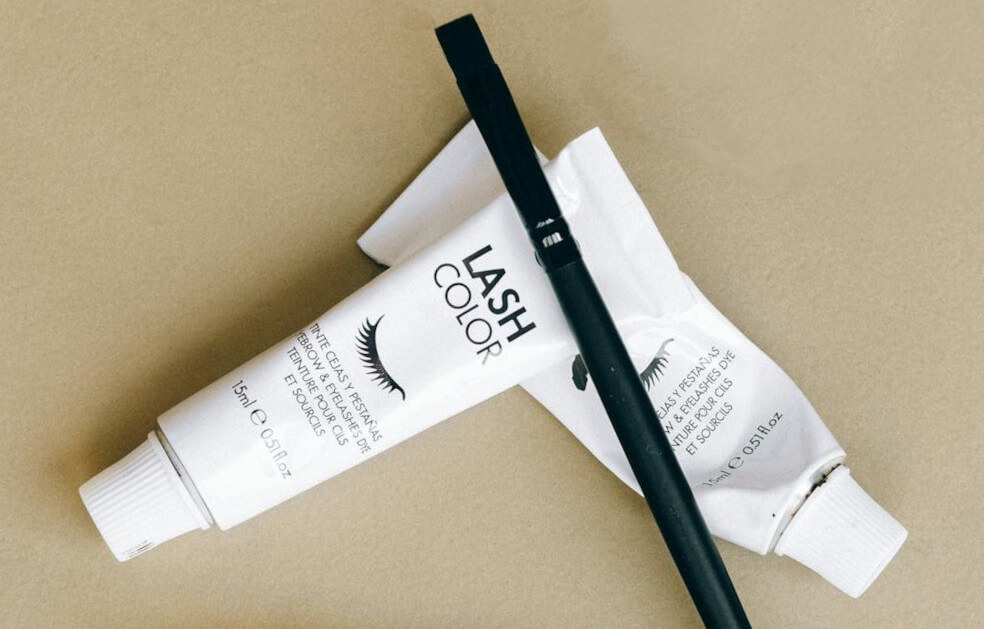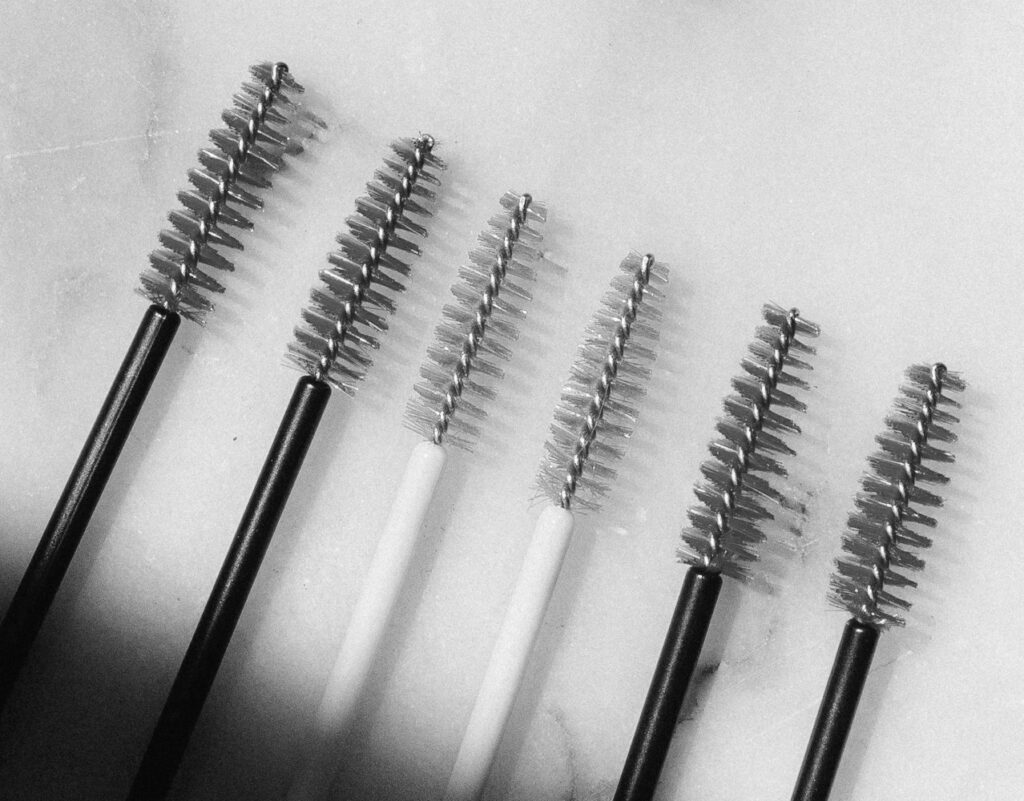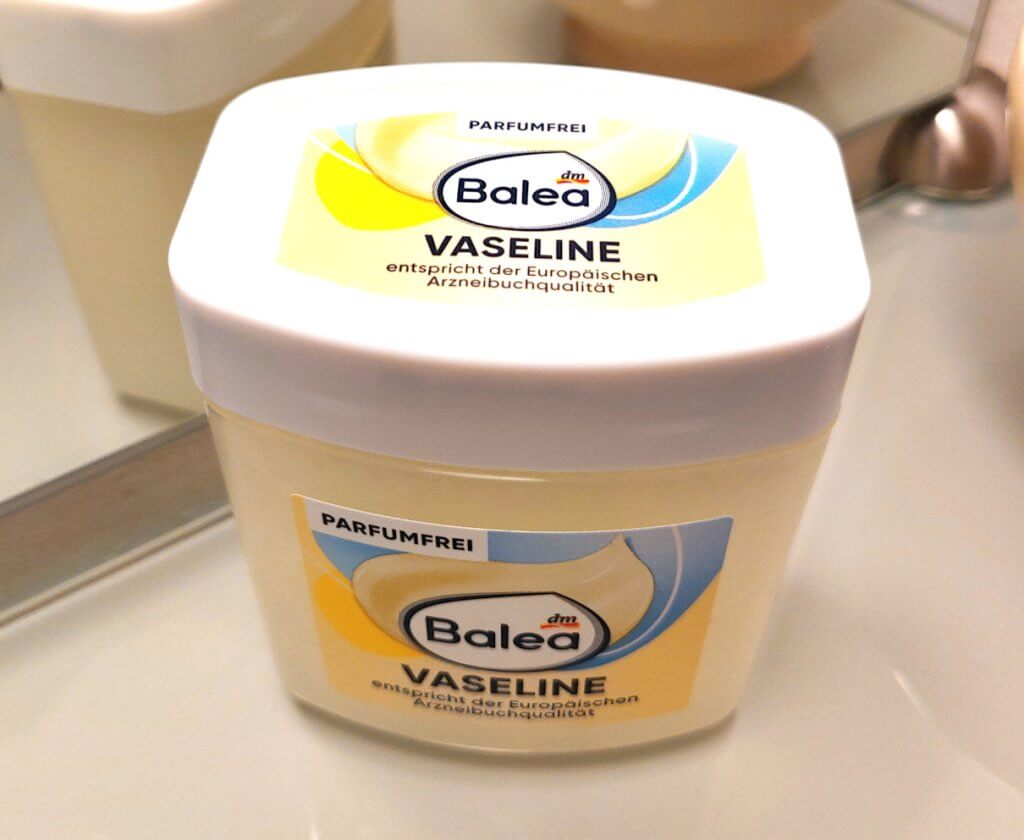
Eyelash tinting for men: a step-by-step guide with product tips, aftercare, and practical advice for natural, lasting results.
You couldn’t pay me to visit a salon. Anything I do to improve my lashes must take place in the privacy of my own home.
So forget lash lifts (basically an eyelash perm) and extensions (a particularly intricate process when adapted to suit men). These treatments must be carried out by a professional I’ll never visit.
But longer lashes are a very masculine attribute. It’s down to testosterone, which stimulates hair growth from the brows downward. This is why men’s lashes are on average longer and thicker than women’s. If you thought otherwise, cosmetics are there to fool us.
Men tend to leave theirs alone, while women’s are subjected to damaging treatments (including the above-mentioned) and the use of mascara, which hardens and may cause breakage.
In other words, if your lashes are dark enough to give your face definition, leave them as they are. Cosmetic interventions rarely do them good.
Why Would a Man Tint His Eyelashes?
If you’re a blond or redhead, darkening can improve your overall appearance. Well-defined brows and lashes frame the face, especially if you’re bald.
But it can also be useful if you’re a brunet.
Lash color fades with age. Or, as I’ve experienced, excessive sun and pool chlorine can bleach the tips, making lashes appear shorter. Strong soaps can have a similar effect.
In any of these situations, tinting is a quick fix.
Tinted lash and brow gels are another option for men, but dye provides lasting, natural-looking results without the risk of smudging.
Why Use Dedicated Eyelash Dye?
Not only is the eye area sensitive, lashes are naturally fine and porous. This is why lash dyes are formulated without ammonia, the job of which is to open the cuticle of coarser hair in order that pigment molecules can reach the cortex.
There’s also less chance of irritation; you may have noticed that the mere smell of ammonia can make your eyes smart.
Why Lash Dye Fades More Quickly Than Scalp Dye
If you find that results are shorter-lived than with the dye you use on your scalp or beard, it’s due to the faster growth cycle of lashes and not the longevity of the dye itself.
Using anything other than eyelash dye will only damage your lashes and may harm the eye during application.

Using Lash Dye on Your Brows
This is where I’m going to contradict advice given elsewhere.
Calling it “Eyelash and Eyebrow Dye” is largely a marketing ploy to make you use more.
Brows are coarser and more resistant to pigment molecules—especially when gray. Even if lash dye does take well initially, it won’t last.
Therefore, use the same dye on your brows as you do on other facial hair. Just for Men Beard and Mustache is a good choice.
Items Needed to Tint Men’s Eyelashes
You’ll find an array of eyelash tinting kits on Amazon.com. These typically include:
- Lash-safe dye, which is ammonia-free
- 10 vol. (30%) developer
- Tinting brush and/or spoolie applicator
- Protective papers or silicone pads for the undereye
- Mixing dish
Additionally, you’ll need petroleum jelly to protect the upper eye area from staining, and to hold protective papers in place below the eye, if using.
To remove dye specks from the skin, use rubbing alcohol or cologne applied with a cotton swab. Note that cologne should be a last resort only—it requires more rubbing and its fragrance may be irritating.
For cleanup directly after the treatment, use a cotton pad soaked in contact lens saline solution. Unlike tap water, it’s sterile, free of chlorine and minerals, and helps soothe the eye area in case of irritation.
If you’re not buying a kit but sourcing each item individually, make sure your developer is a lotion or cream. Liquid formulas are too runny and may seep into the eye.
Note: RefectoCil uses a liquid developer, but it’s only suitable when paired with their own dyes.
Something no other eyelash tinting guide for men will tell you: a lash curler exposes the entire lash surface, allowing for even coverage while keeping the dye away from the eye. I’ll tell you how to use it later on.

How the Dye Works
As you’ve probably gathered, two components are required to tint lashes: dye and developer.
The dye contains color pigments that are absorbed into the lash hair. The developer, which is hydrogen peroxide-based, aids absorption and activates the dye through oxidation. This chemical reaction locks in pigment, creating a lasting color change.
Which Color to Choose
For light-haired men, I recommend RefectoCil for its larger color range, which includes light brown. This will discreetly add definition without other people registering the change. If it turns out too light, you can mix with a little natural brown the next time you tint.
For medium blond to mid-brown men, brown dyes offered by most manufacturers give natural-looking results. For very dark-haired men, black is the best option.
The Patch Test
Because the eye area is so sensitive, it’s advisable to perform a patch test before proceeding.
- Wash your inner elbow or behind one ear and dry.
- Mix a tiny portion of the dye and developer in a ratio of 1:1 (or according to the manufacturer’s instructions if using a kit). Dab onto the cleansed area, and allow to dry.
- Wait at least 2 hours before rinsing.
- If you experience blistering, swelling, redness, or any other irritation during the next 48 hours, do not proceed with the treatment.
How to Tint Men’s Eyelashes Step-by-Step
1. Cleanse the Eye Area
Unless you’re wearing a lash cosmetic, there’s no need to cleanse the eye area first. The natural oils produced around the lash line serve as added protection.
If you’ve covered your lashes with an oil, cream, or gel, either take a shower or gently remove it with micellar water.
Micellar water is composed of tiny cleansing molecules (micelles) suspended in water. It’s gentle, non-stripping, and no-rinse. Apply to a cotton pad and swipe over the eye area, paying particular attention to the lashes.
2. Apply Petroleum Jelly
Using a cotton swab, apply petroleum jelly along the upper and lower lash lines. Take care not to cover the lashes themselves, as this would prevent the dye from working. With your ring finger, apply to the remaining eye area up to the brow and down to the top of the cheek.
This prevents staining and holds protective papers in place.
3. Position Protective Papers
Press protective papers onto the undereye area. These should fit snugly against the lower lash line—I find this uncomfortable when blinking, but it does prevent staining.
Silicone protective pads provided in some kits won’t hold on petroleum jelly.
4. Mix the Dye
If using a kit, mix the dye and developer according to the manufacturer’s instructions. For example, RefectoCil uses 2 cm of dye and 10-15 drops of their own liquid developer. This gives a ratio of 1:1.5 approximately.
If you’ve sourced each component separately, a ratio of 1:1 is standard. In other words, one-part generic cream developer with one part dye, whether it’s by RefectoCil or another ammonia-free brand suitable for the eye area.
Stir the two components thoroughly until they form a creamy paste.
5. Curl Your Upper Lashes (optional)
For more even results and to keep the dye out of your eyes, use a mechanical lash curler before tinting. This is something most men don’t possess and would be embarrassed to buy—Amazon.com offers a discreet option.
Lash curlers resemble a clamp that opens and closes with a scissor-like mechanism (see above photo). To protect lashes from being pinched or broken, it has a silicone pad. Replace this if it has become cracked, stiff, or discolored.
It’s very easy to use: gently clamp the lashes at their base, hold for 5-10 seconds, and release.
6. Apply the Dye
Using a spoolie applicator or tinting brush, coat the upper lashes from base to tip. Don’t go right down to the root—leave a gap of about 1 mm between the dye and the waterline (the pink inner rim of the eye).
Light-haired men may want to tint their lower eyelashes. In this case, concentrate on the tips only. This gives natural-looking results with less risk of the dye seeping into the eye.
7. Allow the Dye to Develop
Leave the dye on the lashes according to the manufacturer’s instructions if using a kit.
Otherwise, allow it to sit for 10 minutes.
8. Remove the Dye
Remove the protective pads and soak a cotton pad in contact lens saline solution.
With your eyes closed, gently wipe the dye from your lashes and pat dry.
9. Remove Stains from Skin
In case of skin stains, erase with rubbing alcohol or cologne and a cotton swab.
If using rubbing alcohol (preferred), a quick swipe should do the trick.
10. Inspect and Adjust
Check for even coverage. With a fresh batch of dye, reapply if needed, paying attention to missed areas.
Color results should last 3-4 weeks, depending on growth.

Aftercare
To ensure that the dye properly sets and doesn’t lose intensity, leave your lashes alone for the next 24 hours. That means no cleansing and no moisturizing—oils in particular can cause fading.
This is why it’s best to tint lashes directly after your daily shower.
Daily Care
Once the 24-hour “setting” period has elapsed, begin with a daily care routine. It’s simple and takes only a few seconds.
To prevent lash tips from bleaching through environmental factors, apply an SPF lip balm to the ends each morning. Use sparingly—too much will attract dust and pollen.
Use a light layer of castor, jojoba, or argan oil at night to shield the lashes from pillow friction. Castor oil is especially credited as a growth aid, but the real benefit lies in moisturizing and preventing nighttime breakage. Alternatively, petroleum jelly works well. It’s occlusive, fragrance-free, and won’t seep into the eye.
Avoid beard oils and balms. These often contain fragrance and essential oils that can irritate the eye area.
© 2025 J. Richardson
Related Posts
Disclaimer
The information provided by The Neat and Tidy Man (“we,” “us,” or “our”) on theneatandtidyman.com (the “site”) is for general informational purposes only. While we endeavor to keep the information up to date and correct, we make no representation or warranty of any kind, express or implied, regarding the completeness, accuracy, reliability, suitability, adequacy, validity, or availability of any information on the site. Under no circumstance shall we have any liability to you for any loss or damage of any kind incurred as a result of the use of the site or reliance on any information provided on the site. Your use of the site and your reliance on any information on the site is solely at your own risk.



